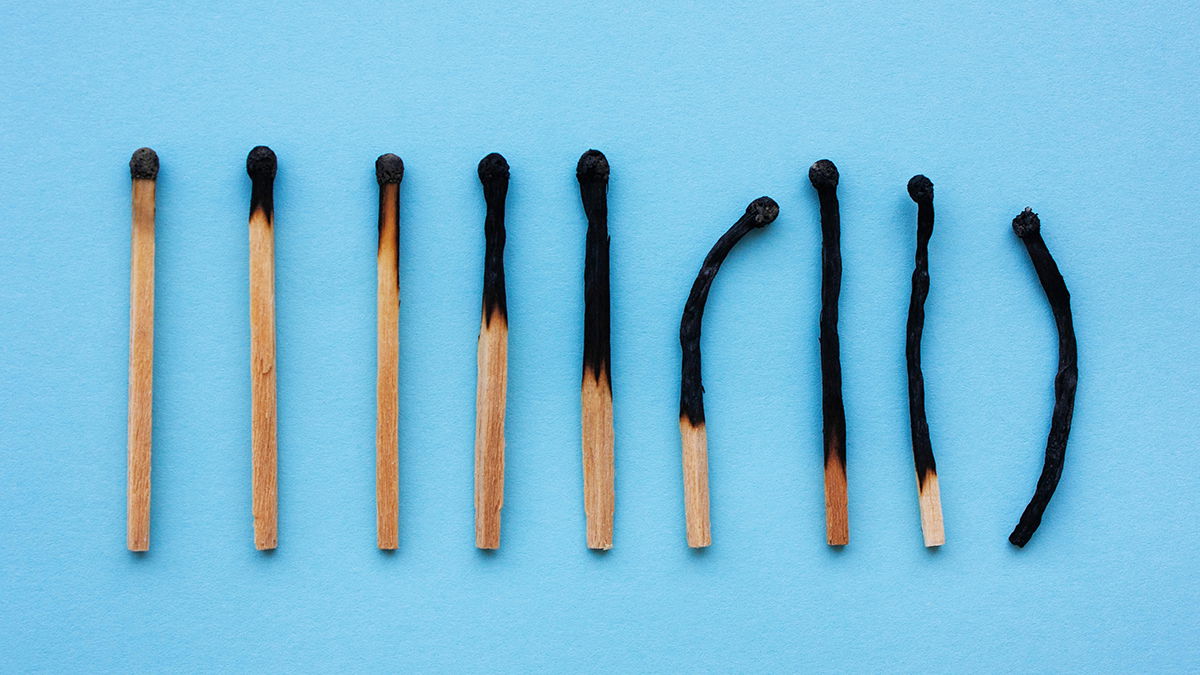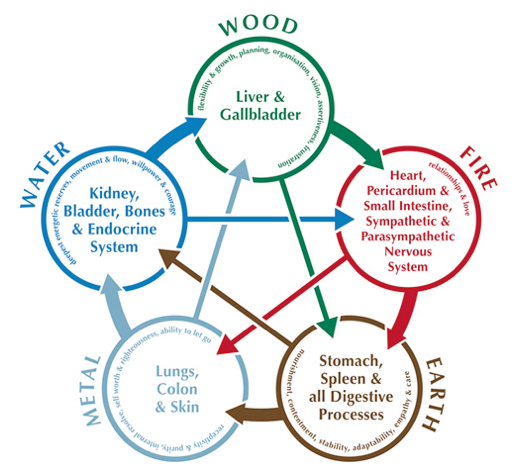Trauma and Burnout: The Hidden Dance of the Nervous System and the Five Elements

There’s a particular kind of silence that enters the treatment room when someone is burned out. It's not restful. It’s hollow.

And it’s familiar—not just in my clients, but in myself and in the colleagues I’ve mentored over the decades. As body-based therapists, we’re trained to listen to the body, but we’re rarely taught to listen to our early signs of depletion, or how deeply trauma threads itself into the patterns of burnout.
In the last several years, I began to see that the missing link wasn’t simply rest or better self-care. It was nervous system literacy and a deeper reconnection to the ancient wisdom encoded in the Five Elements of Chinese Medicine. That’s when the NeuroPath Reset Method was born—a synthesis of trauma repair, meridian therapy, and deep energetic repatterning. Let me take you through the map.
1. Burnout as the Body’s Final Protective Mechanism
When I began as a Shiatsu therapist, burnout was talked about as a byproduct of “doing too much.” But after working with thousands of clients and clinicians, I’ve come to understand it very differently. Burnout is not failure.
Burnout is the body’s intelligent attempt to protect itself. It is the system saying, “We can’t sustain this anymore.”
The nervous system—particularly the dorsal vagal branch—kicks in to conserve energy by flattening affect, dulling sensation, and reducing engagement. Clients would come in describing brain fog, chronic fatigue, digestive upset, loss of motivation, and a sense that “nothing touches me anymore.” I recognized it in myself, too—especially after years of holding emotional space for trauma without enough time to metabolize it while running an integrative clinic, which I was absorbing. In the language of the Five Elements, this presents as Metal element collapse. The Lung and Large Intestine lose their rhythm. Clients can’t exhale emotionally. There’s grief that never quite moves. They feel dry, brittle, and cut off from their breath—both literal and spiritual. What broke the "back of the camel" seeing my dear cousin die from cancer showed me a possible reality for myself. Grief made me shift and come on a new, more sustainable path.
In my clinical sessions:
Once disarming the protective mechanisms facilitated by the pericardium and the vagus nerve, I often begin by gently holding Lung 1 and Kidney 27, encouraging the client’s awareness to drop back into their breath. I listen with my hands for the first spontaneous exhale—the moment their body says, “Okay, maybe I can be here now.” You are successful when the shoulder "drops".
Meridians to support:
- Pericardium/heart - relax the heart
Lung meridian: Breath, grief, boundary
Kidney meridian: Fear, essence, root
Large Intestine meridian: Letting go, clarity
2. Trauma as an Incomplete Process, Not a Past Event
For years I asked my clients, “What happened to you?” But now, the more relevant question is, “What got stuck in you?” Trauma lives not in the story, but in the body’s incomplete responses. That moment you wanted to run, scream, cry, or fight—but couldn’t. The body remembers those unfinished gestures. That’s where it loops.
In the Five Elements, Wood governs movement, expression, and direction. When trauma isn’t completed, the Liver and Gallbladder meridians become agitated or congested. This isn’t just emotional—these channels are deeply tied to muscle tension, decision-making, and flow.
In my own experience:
When I’ve felt frozen in decision-making or overly irritable, it’s usually my Wood energy trying to break through stagnation. Often, this coincides with waking up at 3:00 AM—Liver time in the Traditional Chinese Medicine (TCM) meridian clock—my body calling attention to the unmet needs stored in my tissues.
In clinical work:
The gentle rocking of the hips and diaphragm while working Liver 3 (Tai Chong) and Gallbladder 34 can help unblock this energy. I sometimes guide clients to push against resistance in a controlled way, allowing the body to “complete” a fight-or-flight impulse. Deep dynamic stretches and rotations helps. Strong stimulation to move the energy.
Meridians to support:
- Liver meridian: Flow, emotional flexibility
- Gallbladder meridian: Action, vision, movement
3. The Therapist's Dilemma: Giving Without Grounding
Here’s the hard truth: therapists often burn out not from too many clients, but from not enough energetic digestion of what we take in.
The Earth element (Spleen and Stomach) governs nourishment—not just of food, but of thought, empathy, and emotional energy. When Earth is deficient, we become worriers, over-functioners, and chronic caregivers. I’ve lived this. There were years when I was seeing 30-40 clients a week, teaching workshops, public speaking in communities, mentoring therapists, and running a clinic. Outwardly, I was “successful.” Inwardly, I felt drained. I stopped feeling my feet on the ground. I couldn’t digest the emotional weight I was carrying.
In practice:
When I see these signs in myself or my clients—ruminating thoughts, sugar cravings, heaviness in the limbs—I work directly on Spleen 6, the abdominal center (Hara), and encourage grounding rituals like eating cooked root vegetables, slow chewing, and barefoot walks.
Meridians to support:
- Spleen meridian: Containment, nourishment
- Stomach meridian: Receiving, digestion
4. The NeuroPath Reset Method: A Somatic Path to Completion
Over the years, I found myself blending everything I’d learned—Shiatsu, trauma theory, meridian diagnostics, neural manipulations,, breathwork, coaching, hypnotherapy, shamanic healing and somatic unwinding. That blend became the NeuroPath Reset Method—a system that helps the nervous system complete what it never got to finish. A system that can create an architecture for change and trauma healing. It’s not a protocol. It’s a way of listening—to where the energy froze, to where the body wants to move, what elemental support is missing and what tools and processes are needed to help the clients and the therapists.
The method integrates:
- Meridian-based touch that reconnects clients to their somatic map
- Polyvagal-informed sequences to support regulation and ventral activation
- Five Element wisdom to track emotional, physical, and energetic states
- Micro-movements and breath work to complete trauma responses,
Neural manipulations,
- Transformational coaching
- Shamanic methods
Recently, one of the most powerful sessions I ever gave was with a fellow therapist. She came in numb, disconnected, saying, “I feel like I can’t do this anymore.” Her pulses were weak in the Kidney and Spleen. I began by holding Kidney 3 and Spleen 6, and by the end, she was weeping—not from pain, but from recognition. Her body had finally been heard. Holding the space of recognition and transmitting it to the body through intelligent touch can be transformative.
5. Rituals for Recovery: Realignment Through the Elements
Healing isn’t just about what happens in a session. It’s what we do in the spaces in between. Recovery becomes sustainable when we create rituals aligned with the Elements. Here are some I return to, personally and professionally:

- Water (Kidney-Bladder): Long baths with Magnesium chloride salts, resting with a warm pack on the lower back, silent meditation
- Wood (Liver-Gallbladder): Stretching in nature, journaling difficult emotions, fast walks, or weight training with music
- Earth (Spleen-Stomach): Home-cooked soups, grounding breath, self-touch on the abdomen
- Metal (Lung-Large Intestine): Breathwork, letting go ceremonies, minimalism
- Fire (Heart-Small Intestine/Pericardium-San Jiao): Laughter, dance, connection, safe intimacy
These rituals aren’t luxuries. They are medicine. When done consistently, they help the system reclaim flow, rebuild reserves, and restore rhythm.
In Closing: The Body Remembers the Way Home
If you’re a therapist, healer, or caregiver reading this and feeling frayed, let this be your reminder: you do not have to collapse to rest. You don’t have to burn out to set boundaries. Burnout and trauma are not signs that you are broken. They are signs that your body has been wise enough to pause. In the language of Ki, healing is not linear. It spirals. And with the right support—nervous system repair, meridian wisdom, and somatic touch—we can find our way back. Not to who we were before the trauma.
But to who we are with the strength of having moved through it.
Yours truely,
Mihael Mamychshvili
Creator NeuroPath Reset Method